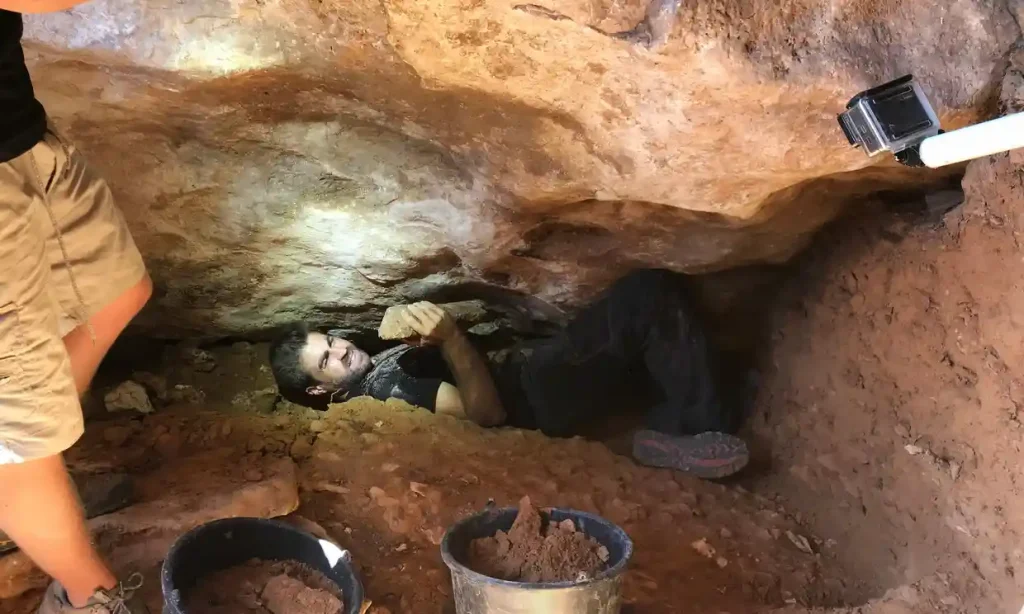A group of researchers has made an exciting discovery in a cave system in south-east Spain. They stumbled upon a massive cavern that had been sealed off for thousands of years. Inside, they found impressive stalactites and marks made by extinct cave bears. The researchers believe that this finding provides valuable insights into prehistory.
The discovery took place at Cueva del Arco, a collection of caves near the town of Cieza in the Almadenes gorge. Previous excavations at the site had already uncovered evidence of human settlements dating back 50,000 years, making it one of the few locations in eastern Iberia where the transition from Neanderthals to modern humans can be traced. The experts working at the site suspected that there were more discoveries to be made.
During a dig in 2018, led by Ignacio Martín Lerma from the University of Murcia and Didac Román from Jaume I University in Castelló, the team came across what they believed to be a blocked entrance to a large chamber. Their hunch proved correct, and careful excavation revealed an air vent. Unfortunately, the COVID-19 pandemic interrupted their work, forcing them to halt the dig.

Finally, in the past year, when they were able to return and explore the chamber, they were amazed by what they found. The team described it as a world-class discovery. The rooms inside were enormous, some reaching a height of 20 meters, making them the tallest in the region. The stalactites were equally impressive, with some measuring three meters in length and just one centimeter in width. This indicated that they had grown undisturbed in extremely stable conditions over many millennia due to the isolation of the cavern.
The marks on the walls revealed evidence of cave bears, which became extinct approximately 24,000 years ago. This suggests that these bears inhabited southern Europe farther south than previously believed. The team emphasized that the presence of cave bear claw marks makes this cave a significant and truly unique example of where these large mammals once lived in the region.
Martín Lerma, the project’s scientific director, expressed his excitement, stating that the discovery had exceeded all expectations and opened a new window into prehistory.
While the finding of such a large and well-preserved cavern could attract researchers and tourists to the area, Martín Lerma appealed to everyone to allow the experts sufficient time to complete their studies. He stressed the importance of preserving this intact natural treasure in its current state.